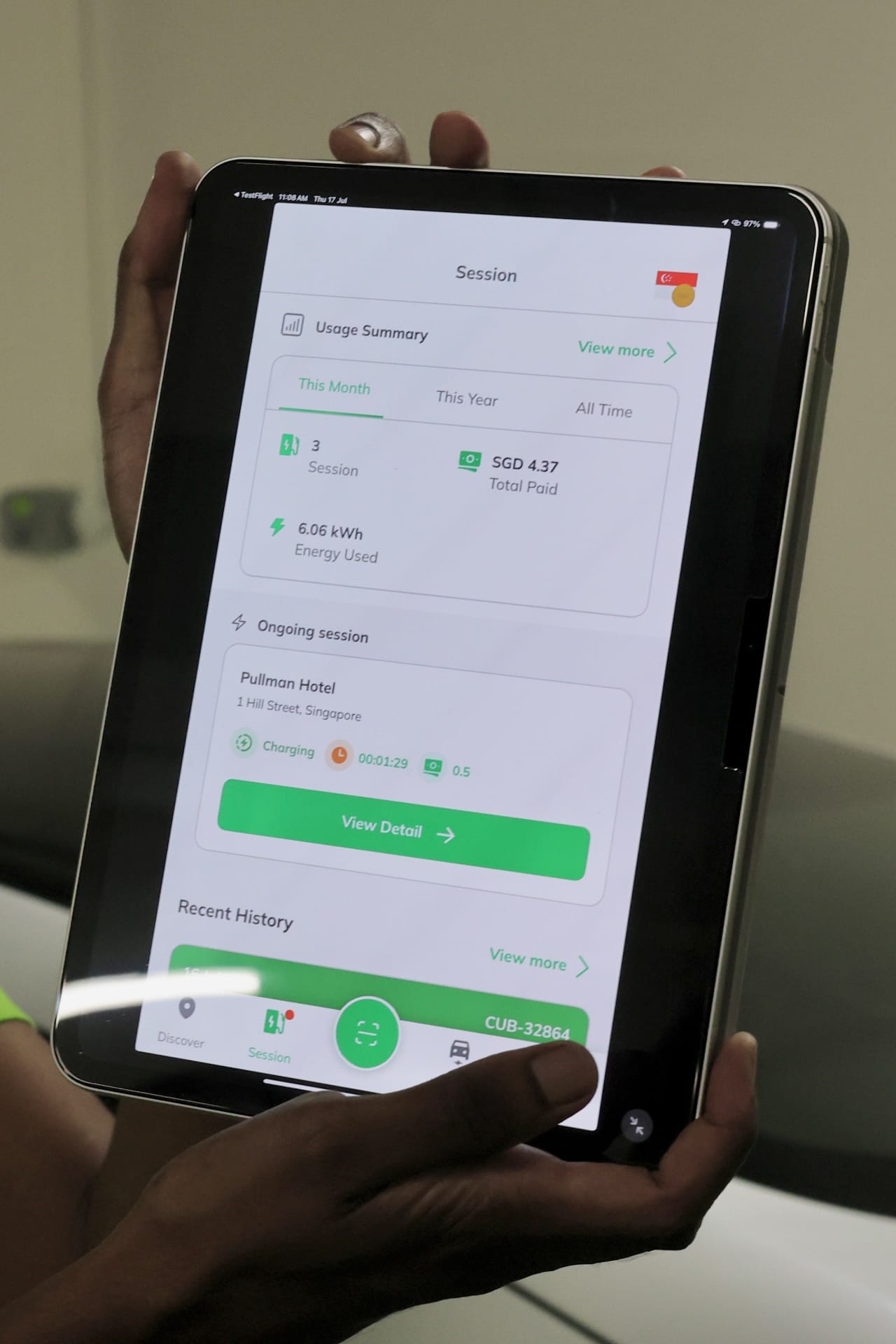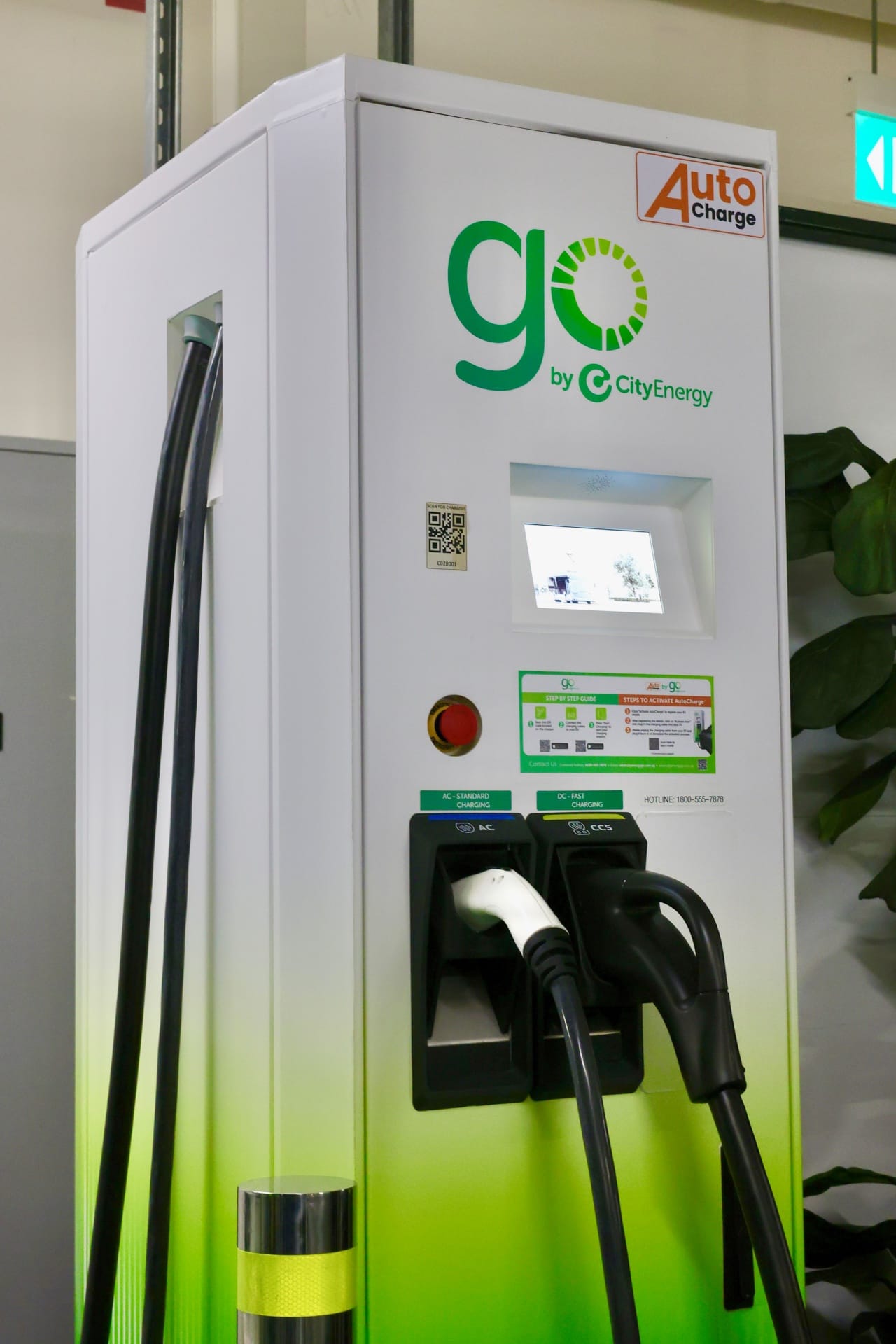City Energy’s latest rollout, AutoCharge, introduces what EV drivers in Singapore have long been waiting for: a genuinely plug-and-go EV charging experience. Available now across more than 200 charging points in Singapore and Malaysia, AutoCharge lets EV drivers start a charge simply by plugging in — no apps, no QR codes, and no fiddly car park reception issues.
If you make frequent drives across the border, EV charging has potentially become easier.
AutoCharge is the first implementation of its kind in Singapore and is being rolled out by Go by City Energy, the company’s EV charging arm. The move is part of a strategic partnership with Malaysia’s JomCharge network — one of the country’s top three charging providers — and suggests that Southeast Asia’s EV space may finally be inching toward regional interoperability.
How it works
 Once users register their EV via the Go by City Energy app — a one-time setup using the Vehicle Identification Number (VIN) — their vehicle is tagged to their account. After that, AutoCharge identifies the car through its Electric Vehicle Communication Controller ID (EVCC ID) — functionally similar to a computer’s MAC address, and designed to preserve privacy — whenever it’s plugged into a compatible charger via DC fast charging (AutoCharge currently supports DC fast charging only; AC users will still need the app).
Once users register their EV via the Go by City Energy app — a one-time setup using the Vehicle Identification Number (VIN) — their vehicle is tagged to their account. After that, AutoCharge identifies the car through its Electric Vehicle Communication Controller ID (EVCC ID) — functionally similar to a computer’s MAC address, and designed to preserve privacy — whenever it’s plugged into a compatible charger via DC fast charging (AutoCharge currently supports DC fast charging only; AC users will still need the app).
The system immediately authenticates the vehicle — no phone interaction required. That means drivers can skip app logins, QR scans, and the usual tap-dancing of waiting for mobile signals in a concrete car park.
At launch, the AutoCharge feature is available at five locations in Singapore (Pullman Hill Street, Klimt Cairnhill, Komo Shoppes, North Gaia, and North Park Residences), with more to follow in phases. The wider network spans Singapore and Malaysia, with access to over 200 cross-border charging points via the JomCharge integration, making this one of the few truly plug-and-go EV charging experiences in Southeast Asia.
Is there a catch?
 The “app-free” experience applies primarily to starting a charge. However, as with technology, it depends on the existing tech that you have. While a full charge usually takes under an hour and is typically short enough to simply wait, if you wish to stop the session midway, electronic intervention is required — i.e., you need the app or the in-car dashboard.
The “app-free” experience applies primarily to starting a charge. However, as with technology, it depends on the existing tech that you have. While a full charge usually takes under an hour and is typically short enough to simply wait, if you wish to stop the session midway, electronic intervention is required — i.e., you need the app or the in-car dashboard.
To be fair, most newer EVs, including models from Tesla, BYD, MG, and AION, support in-vehicle charge management. AutoCharge currently supports these same brands, plus Chery, with more to follow. But if you’re driving an older EV or something without this feature baked into the infotainment system, you’ll still need to fall back on the app.
Is that a dealbreaker? Not really, as you have to be woefully negligent to wind up in a situation where you have no backup — no portable battery, no charging cable in the car, no friend or family who can help you activate your charging remotely, etc. But it does mean that AutoCharge isn’t 100% frictionless, but it’s as close as it gets.
Why this matters
AutoCharge is currently available only at select locations, but its existence changes expectations. No longer exclusive to Tesla owners, it addresses a genuine pain point in the EV experience. Most public chargers still rely on apps or QR code scans — processes that are often disrupted by patchy car park reception or incompatible cross-border systems. By eliminating these steps, AutoCharge makes day-to-day charging far more intuitive.
And for drivers who frequently travel between Singapore and Malaysia, it offers a rare continuity of experience, much like automatically switching mobile phone networks. Whether you’re zipping to a mall or heading into Johor for the weekend, it’s one less app to worry about. And sometimes, that’s the spark you need to move the needle.
